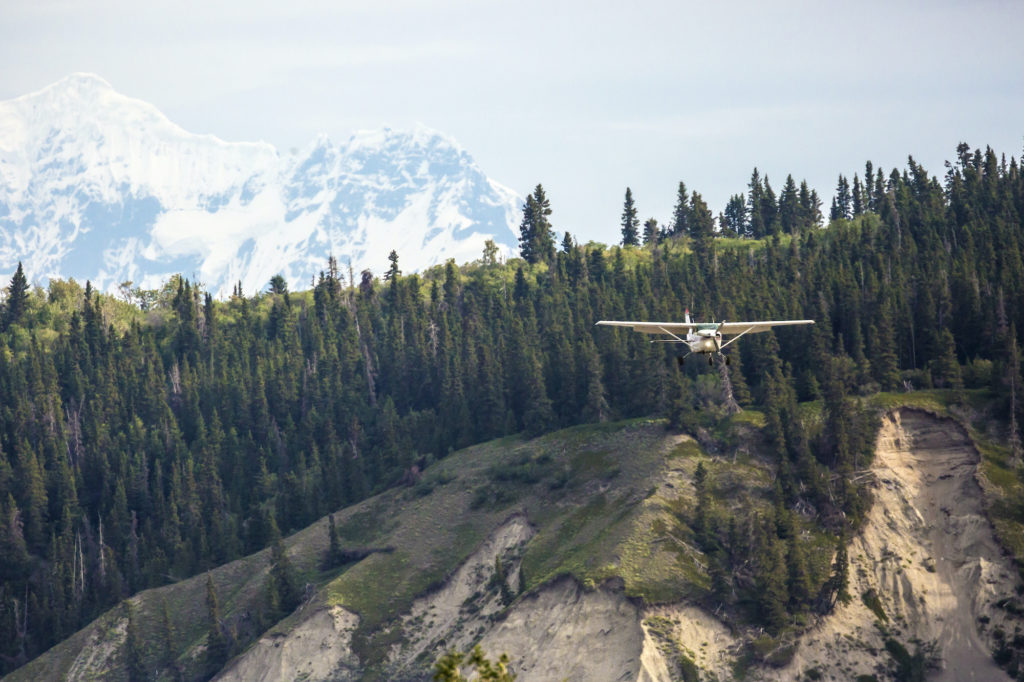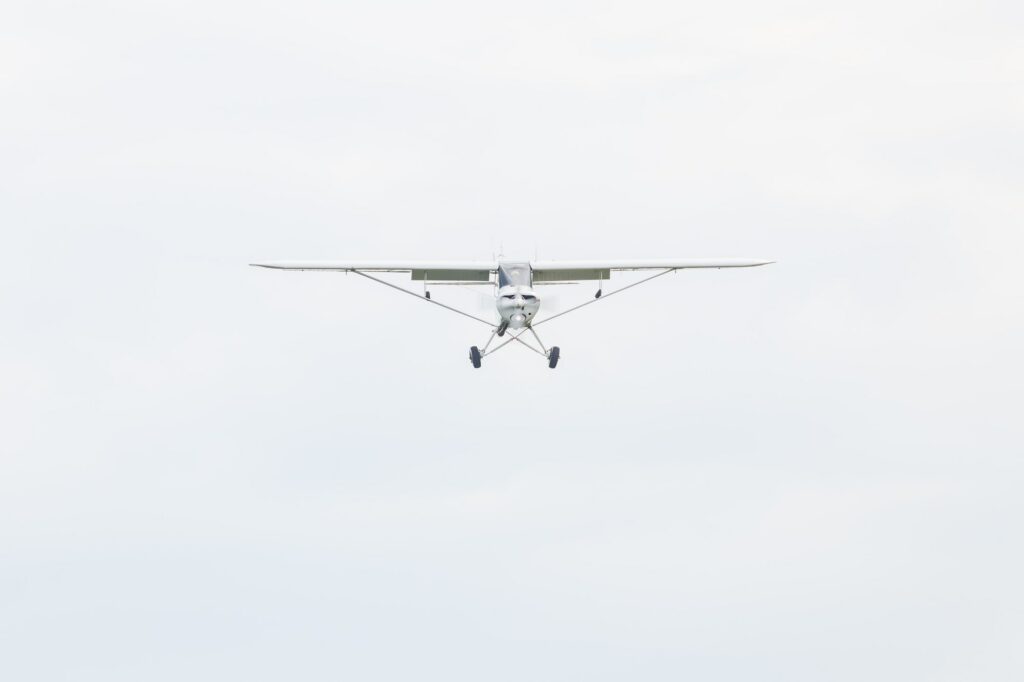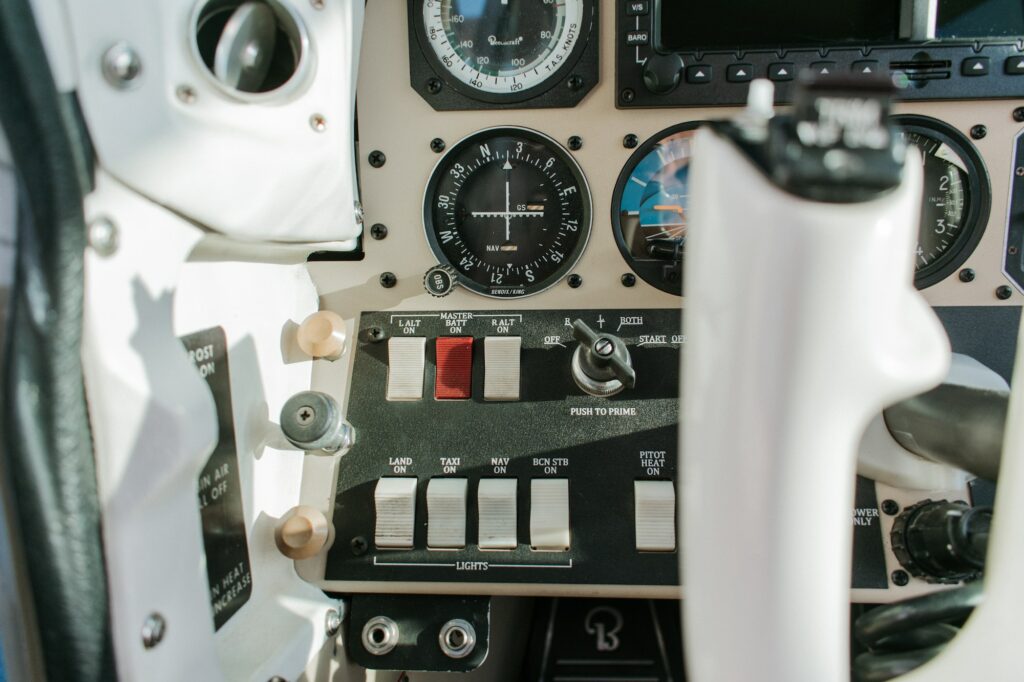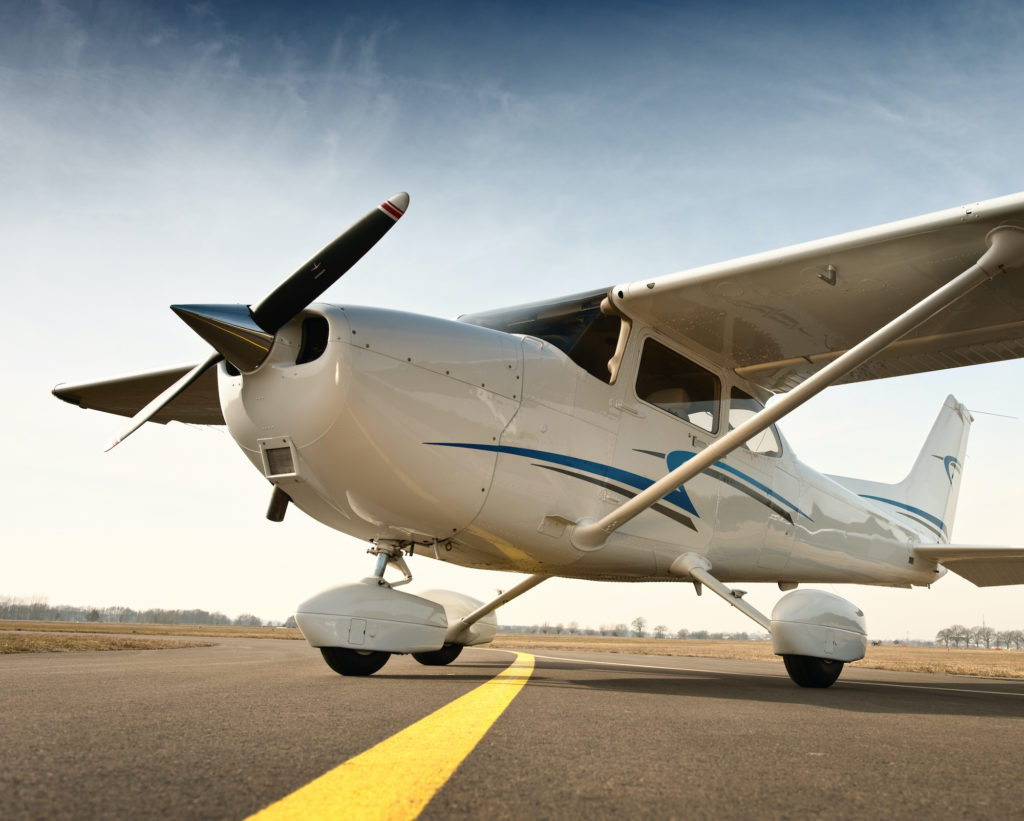
Flight Training Tips for the Savvy Pilot
Flight Training Tips for the Savvy Pilot
Flight Training is hard work. But having the proper process in place can ensure that your efforts yield tangible results.
You’re ready to start flight training. You’ve found a flight school, picked a ground school program, and started the process of obtaining a medical and student pilot certificate. Great work! Now, it’s time to get down to business.
When you start flight training, you’re starting an expensive and time-intensive endeavor. It’s often extremely rewarding, but can also be frustrating when approached the wrong way. Let’s discuss the right way to approach flight training. There are mindsets and habits, which, when cultivated properly, will yield major benefits in your flying ability and confidence, and ultimately how much fun — and success — you have in the cockpit.
Plain and simple, flight training is hard work. Having the right process, however, transforms that hard work into something tangible and rewarding. Having no process, or the wrong process can make that hard work as effective as rhythmically drumming your forehead against the drywall.
Money
Let’s talk about the ugly stuff first — money. Flight schools oftentimes don’t like to talk about it, preferring to beat around the bush, and often will hardly mention it except when they send a bill. Learning to fly is expensive, and there’s no way to avoid that entirely. But you can spend your money wisely. One of the best ways to reduce your training cost is to complete training in a tight period. Six months or so is a great target. Have all the money needed for training saved up and ready to go ahead of time, and then hit it hard for six months. At the end of six months, you’ll have a Private Pilot certificate in hand.
What many instructors see all the time are students who come in once or twice a month and take a couple of lessons and then do the same month after month. Unfortunately, students who only train a couple of times per month remember very little between lessons. So, we’ll do lesson 1 and 2 in January and come February, we’ll have to cover all of lesson 1 again because the student has already forgotten everything. It’s a great way to build up your flight instructor’s logbook, but you’re paying way more than you should! By the time you finish (if you do), you could easily spend double what you initially estimated.
Training 2-3 times a week or more is ideal. If you’re flying every day, that’s probably excessive, but I’ve seen plenty of students handle that too. Some even do twice-a-days. But, don’t do twice-a-months. It doesn’t work, and we’ve seen it enough times to feel pretty confident in that statement.
Students that are only training a couple of times a month should ask themselves why they are in flight training in the first place. Is it for fun? To pursue a career? Such a significant financial commitment should also connect to an emotional or personal commitment. Finally, while new pilots aren’t as familiar with the flight training process as instructors, they are still the best judge of whether their flight training is a good value to them personally. If your flight training seems like a bad investment to you, maybe it is.
Have Tough Skin
You are going to make so many mistakes during training. So, so many. You’ve got to accept that right off the bat and recognize that it’s an essential part of the process. Most people learn from mistakes, and they often retain that information for a long time. It’s been 8 years since I started flight training and I don’t remember many of the specific things my instructor said, especially in the airplane, but I remember plenty of my mistakes.
One of the reasons flight instructors are preferred applicants at many airline and corporate jobs is that they’re frequently better pilots. This is largely not because better pilots become instructors, or because instructors are inherently better, but because instructors get to see mistake after mistake all day long.
Be aware of the mistakes you make during training. You will never, ever fly an airplane and not make some mistake. The goal, for as long as you fly, is to make smaller and smaller mistakes each time and to learn from each mistake. As you improve, your errors will become progressively smaller and will more frequently be errors in the process (e.g. forgetting to perform a clearing turn) as opposed to errors in the outcome (e.g. failing to hold altitude in a steep turn).
Have the right attitude about your mistakes. When you mess up, you’ll know and we’ll know. And if one person doesn’t know about the mistake, it’s usually the student, not the instructor. Again, you’ll be making mistakes the entire duration that you fly, so you might as well have a good attitude about it. Many students (and even experienced pilots) try to make excuses or explain away their mistakes. How about this instead? Own up to the mistake and then ask yourself and your instructor what you can do to avoid the mistake next time. If you want to piss off an instructor, an examiner, a fellow pilot, or a captain, a surefire way is to make a mistake and then take zero ownership of it.
Frankly, as a pilot, you are a leader, almost from the get-go. Halfway through training, you’ll be flying solo, acting as the pilot in command. After earning your Private Pilot’s License, you’ll be flying others around. And if you are career-bound it may not take long before you’ll be in charge of the safety of hundreds of passengers. If you cannot own and reflect upon your mistakes you lack the emotional maturity to be in this business.
Aviation is about the long game. Ultimately, the most important observations of your performance are not the ones made by instructors or even examiners. It is the daily observations and corresponding improvements that you make as an aviator. When you become more aware of your own mistakes than the instructor or other pilot does, a real growth opportunity emerges.
Value the Briefs and Debriefs
Because half of flight training is essentially poking holes in the sky while making progressively smaller mistakes, it’s important to spend some time before and after the flight to talk about what mistakes you want to avoid, which mistakes you made, and how you can change your processes to avoid those mistakes again in the future. It’s a matter of creating a feedback loop. If you can consistently make a mistake, learn from it, and never make it again, shoot us an email — we’re looking to hire the perfect pilot. If, like the rest of us, you can learn from your mistakes just some of the time, welcome to the club. But, the good news is that learning from even some of your mistakes is a great step in the right direction!
Your instructor has more experience than you, and they’re likely directing the general direction of training. They’re also aware of errors that you’ve missed. So, the reflection process must involve them. That’s why it’s a great idea to brief at the beginning of a flight and debrief at the end. Take notes. Ask questions. This is where a lot of the learning, and many of the “aha!” moments happen. Don’t skimp on the briefs.
Know the Standards But Don’t Settle For Them
As a student, I would fly with my instructor and evaluate myself based on the practical test standards (now the Airmen Certification Standards or ACS). Through a steep turn, I would vary 60 feet in one direction and back another 70 feet in the other direction and then go “well, is that good enough?” That is a dumb mentality in a pilot and one that I’m not particularly proud of.
It makes me feel a bit better, however, to know that it’s an extremely common mindset. We’re all worried about passing the test. But here’s the thing — if you learn this craft correctly, then you’ll be way ahead of the game. You can look outside, do your steep turn, and feel the buffeting caused by your wake turbulence. You’ll know the sight-picture on the horizon like the back of your hand. And what that means is that you keep it tight. You don’t need to look at your altimeter to know that you crushed it.
Of course, at this point, you’ve probably tightened up your goal, so you don’t feel like you crushed it. You haven’t been trying to keep it within +/- 100 feet. You’re irritated that you were 5° shallow at the bottom and drifted down about 10 feet momentarily before correcting. When we see students in that zone, it’s a great indication that they’re about ready for the checkride.
Formation flying is “aim small, miss small” in action!
If you’re practicing power-on stalls, you might meet standards in a rough-handled, bumpy lead-in and recovery. But you should be shooting for a smooth process from start to finish. One that looks like you’ve done it hundreds of times. Something polished, that demonstrates that you have a mastery of the airplane. Mentally, you are steps ahead and half of the process is practically muscle memory, leaving the other half of your brain available to think about stuff. That’s the goal!
Perfection is the unattainable goal that smart pilots pursue. As many instructors tell their students “aim small, miss small”. During every performance of a maneuver, the goal should be to conduct it better than the previous rep. This process is also a great indicator of burnout: when you consistently perform worse with each repetition of a maneuver, it’s probably time to give it a small break.
Perfection is the unattainable goal that smart pilots pursue. “Aim small, miss small”.
Remember, just because you can meet standards doesn’t mean that you’ve got this down. It means that you’re getting closer. The goal should be to consistently and comfortably meet standards and, when you don’t, understand why you didn’t. If you’re preparing for the check ride and flub up a steep turn (it happens), you should be able to determine why you did that, and know how to avoid doing that the next time.
Getting In Your Reps
That brings us to the next part and the real meat of this discussion. Training is about getting your reps in. Just as if you were weight training, you will not get better until you get your reps in again and again. And again after that.
It’s not enough to:
- Read a section of a book and understand it
- Do a maneuver correctly once or twice
- Be able to recall information on a flashcard after staring at it for 15 seconds
A HUGE part of the ground training process is not learning new information. It’s pounding that information into your thick skull. Take it from me: this is another mistake I made plenty of times through training. I’d read through a section and think “yep, that makes sense intuitively, I can remember that.” Come test time, do you think I remembered? Of course not.
Here’s our recommendation, and the process we design our courses around: Read the material and/or watch the lecture video and take notes. Then transform those notes into flashcards which highlight the main points (we include many recommended flashcard questions at the end of each lesson). Then study these flashcards again and again until they’re committed to memory. Then move on, but come back to them later. You need to fill your head with lots of stuff so that when it comes time to go back to it you’re able to. This is an immensely valuable process that we kept in mind when crafting our Private Pilot course.
The flying part works similarly. You can’t be expected to do the pre-flight, start, and taxi process one time and have it down. But the sooner you get that stuff done, the more efficiently you can move on to other parts of training. In flying, we use a process known as “chair-flying”. Put simply, pilots in training will make or use a poster of the cockpit (or sit in the cockpit when the plane is in between flights) and run through procedures. They’ll touch each switch, say each checklist item, and make every motion they would make if they were doing it for real.
This is not voodoo magic, I promise. It’s a cheap, efficient way to get reps in. You can do it again, and again, and yet again, and not pay a dime. Then, when it’s time to shine, you can get out there, work smoothly and efficiently through the process and move along. It’s hard to emphasize chair flying enough — for most students it’s the breakthrough that they spend all of training searching for. Military pilots use it. Airline pilots use it. Most professional pilots have discovered the benefits that come from chair-flying and use it because it works. Chances are, you should too. Those of you using our Private Pilot course have access to dozens of maneuvers handouts specifically intended for chair flying.
One of the reasons this is so important is that developing confidence is a big part of learning to fly. But confidence doesn’t, and shouldn’t, come about on its own out of nothing. Confidence comes from competence. And competence comes from getting your reps in. Some people understand this better than others. Folks that are good at working with their hands (e.g. farmers, musicians, mechanics) tend to understand it better than others, but that’s not always the case.
Put simply, a lot of flight training is just memorizing stuff. The harder aspects of flying — decision making, flight planning, and risk management hinge upon being able to use the knowledge that you have to make something happen within certain constraints (e.g. staying legal, avoiding unsuitable weather, carrying enough fuel to accommodate contingencies…). If you don’t know the knowledge in the first place, then it’s damn hard to plan according to it. So, grab a pen and some flashcards and get to work. It’s a lot of effort, but the process itself is not inherently difficult. You just have got to get your reps in.
In case you missed it, get your reps in.
Staying Disciplined
Getting your flying reps in is easier if the rest of your life is in order. That means your relationships are good, you are mentally and physically healthy, and you have a grip on your day to day life. You should exercise regularly, eat well, drink plenty of water, and manage your stress effectively. We’ve taught plenty of students with life problems, and it does impact training in a big way. At worst, students will be completely zoned out when they should be learning instead.
And remember, you need a medical certificate to fly, so you should be staying strong and healthy overall.
The Good News
The really fun and exciting part of all of this is that once you understand the process and start putting in the work, things usually start to fall into place. Your competence increases followed shortly by your confidence. If you continue to put in the hard work, this results in rapid improvement in skill and confidence in the airplane which makes flying — which is already incredibly fun — all the better.
In addition to putting in the reps, enjoy exposing yourself to more of the aviation community. Find an airport or a flight school that you can hang around. Watch videos and read books about flying. Heck, shop around for airplanes you can’t afford. It’s all part of exposing yourself to the world of flying. However, don’t confuse watching fun videos with the purposeful and dedicated study required to complete flight training.
Learning to fly is a serious endeavor, but it’s also very fun and very rewarding. Students and instructors can simultaneously take their training very seriously and yet still have a good time and enjoy the process. This is even true for check rides, although that’s a bit harder!
Enjoy your flight training, and don’t forget to get those reps in!






